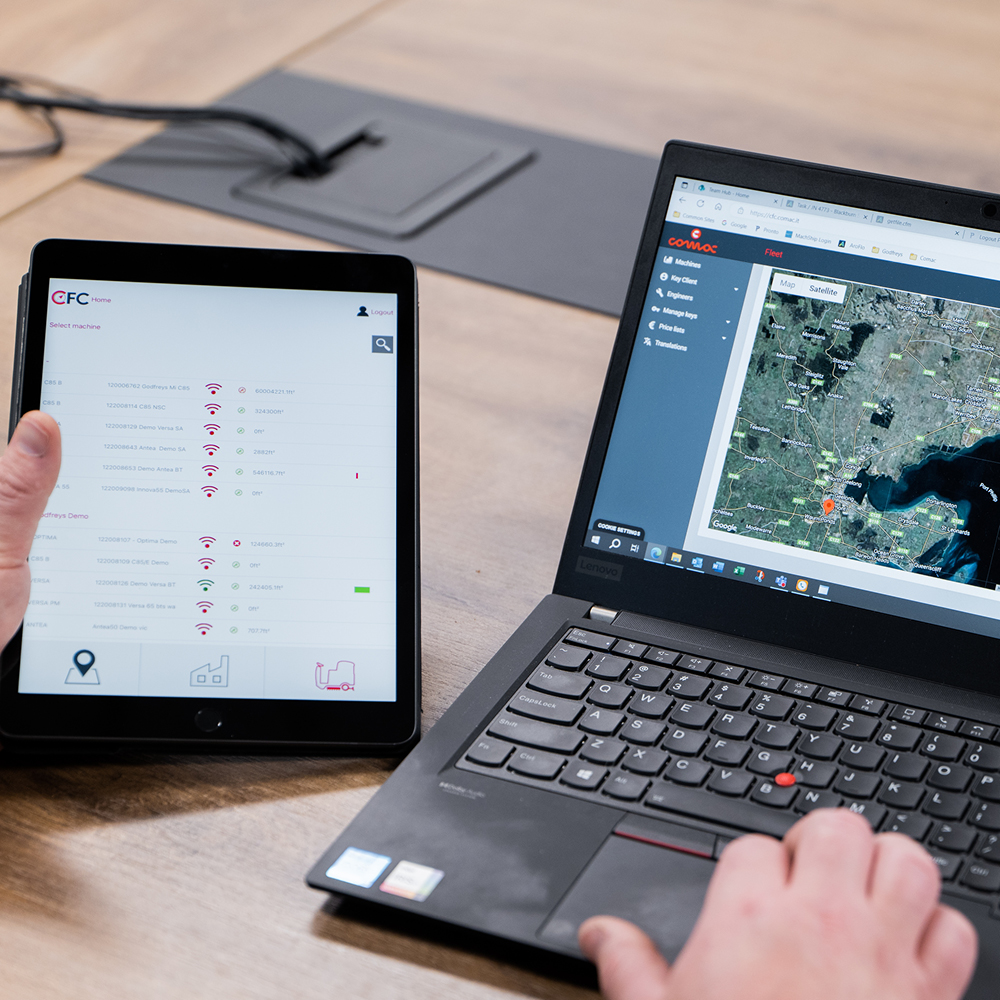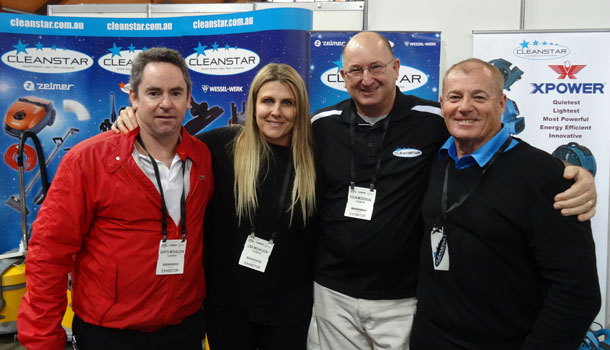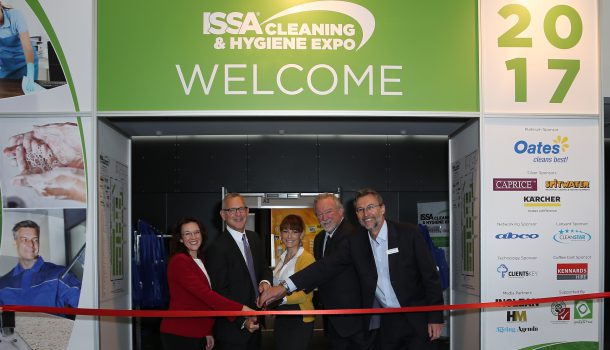
For facility managers and cleaning contractors seeking to get an edge in highly complex and competitive markets, technology innovations and developments are likely to be top of mind next year.
Every year, clients inevitably ask Mark Fermor to discuss the latest technology innovations that can fast-track their businesses.
The Asia-Pacific general manager for TEAM Software by WorkWave – a provider of software for security, cleaning, and facility management companies – prefers to reframe the question and ask: “How efficiently did you implement last year’s innovation and how much better can you use it?”
“There is a danger of always trying to jump on the ‘new thing’,” Fermor says.
“We see a vast difference in value, based on uptake, across our customers. Some use systems really well and get a lot from them, while others do the minimal just to say they’re using it.”
With that wise counsel in mind, we explore some technology topics that should be on the radar for industry leaders – next year and beyond.
- Software, wireless and predictive maintenance solutions
Lisa Michalson, co-founder of Cleanstar/XPOWER, says automated cleaning machines, such as robotic vacuum cleaners and scrubbers, are “slowly gaining traction”. “But the category is in its infancy and has a long way to go,” she says.
In the shorter term, she expects wireless technology that is integrated into cleaning equipment and products to make an impact.
“This allows for real-time monitoring and data collection, enabling better resource management, predictive maintenance and improved cleaning performance,” Michalson says.
Predictive maintenance software is generating interest and promises to transform cleaning in the years to come. With vacuums, for example, it can help anticipate when cleaning equipment may require servicing or repairs.
“This helps reduce downtime and extends the lifespan of equipment,” Michalson says.
As an example of advanced technology that Cleanstar/XPOWER is distributing, she cites the SPRiNTUS ERO PRO digital dry vacuum cleaner, which has integrated Bluetooth connection and a cloud-based fleet-management system.
“It’s very clever and the way of the future,” Michalson says.
For its part, WorkWave will next year introduce some of its American-developed products into the Asia-Pacific region. Fermor says this market currently offers “little in the way of integrated cleaning software to SME cleaning companies”.
WorkWave Service, a field service management software tool, is designed to help fill that void and simplify tasks such as scheduling, dispatching, and invoicing.
“It will bring enterprise-level cleaning software to smaller cleaning contractors, opening the door for them to increase efficiency,” Fermor says.
- ‘Iterative’ cleaning machine improvements
While MotorScrubber Australia’s managing director Lucas Paris is proud that his company will introduce an exciting new product into the Australian market next year, he admits it is an extension of existing technology.
The Dryft, yet to be released, boasts new design and cleaning features. “That’s going to be a real game-changer, but even Dryft is an iteration on the tech theme,” Paris says.
Paris’s point is that the innovations which the cleaning industry was discussing a decade ago – such as robotics, full-cycle sustainability, and digitalisation – are still the trends people are discussing today.
“It’s hard to find innovations which are the equivalent of the iPhone in the telco space, or the Tesla in the motor vehicle industry,” he says.
That observation notwithstanding, Paris expects important and continuing developments in 2024 with digital interfaces that support the deployment, training, and retention of cleaning teams.
- Autonomous advancements
The criticism of robotic cleaning machines in the past has been that, for all their operational strengths, they still need a human being on site to run them efficiently.
That is starting to change, according to Tom Culver, founder of The Robot Factory. He says in the next few years operators will increasingly be able to “leave and forget” these robots.
“We already operate machines that can charge themselves, empty out their dirty water and put new water in, and pretty much take care of themselves for a certain amount of time,” says Culver, who distributes brands such as Gaussian Robotics and Kemaro Robots.
“We have many customers right now in Australia running cleaning robots at night with no or minimal supervision. That’s terrific because it lets the human cleaners focus on the higher-level jobs.”
- Proof-of-service demands
As he observes the Australian market, Fermor says customers of cleaning contractors are demanding proof of service. This, in turn, is driving the uptake of apps such as Lighthouse, a TEAM Software mobile workforce management software tool for cleaning and security businesses.
“It’s not enough anymore for clients to know that cleaners have arrived on-site,” he says. “They also want proof that all their tasks have been completed.”
In the past, this was achieved by periodical audits, but they only reflected performance at a particular point in time.
“Technology that shows clients what the status of cleaning is ‘now’ is catching on very quickly,” Fermor says.
Service is also on the agenda for Culver at The Robot Factory. He says a key barrier in years past with robotics has been to provide comprehensive service and support.
“There’s pockets of people who do it well, but nobody really has a nationwide footprint.”
He hopes to rectify this issue, working with Armaguard-owned Integrated Technology Services to switch its ATM-support network to the robotic-support business.
“I want to be robot agnostic and just bring in the best tech that’s out there in the world and support it really well,” Culver says.
- Efficiency gains versus technology costs
In the current landscape, cost-management is of supreme importance for facility managers, particularly in the aftermath of COVID-19 (see panel).
Kiran Sethumadhavan, managing partner and CTO of digital development group Service Farm, says when weighing up the potential benefits of digital technology versus the associated costs, it is crucial to adopt a strategic approach.
“First and foremost, facility service providers should conduct a thorough analysis of their core pain points,” Sethumadhavan says.
“If challenges such as disorganised processes, manual record-keeping, high operational expenses and fragmented communication persist, then investing in a robust system, even with potentially higher initial costs, can yield substantial returns on investment in a relatively short timeframe.”
He says the technology landscape for the facility management sector has undergone a transformation recently.
This shift is attributable, in part, to the emergence of new applications in the market, as well as the decreased costs associated with software-as-a-service (SaaS) providers, facilitated by the proliferation of cloud platforms such as AWS, Google Cloud and Azure.
“This competitive environment is driving costs down further, making advanced digital solutions more accessible,” says Sethumadhavan, who advises working with SaaS providers to develop a comprehensive product roadmap and cost-effective integration pathways to reduce overall expenses.
For facility managers and cleaning contractors who may be baulking at the expense of new technology, Fermor points out that employee wages in Australia are “by far the largest cost” of doing business.
He endorses using smart technology to save time and money, while adding that a failure to implement technology can often result in a business losing out on the new contracts it needs to grow and succeed.
- Data analysis and utilisation
Although data can be crucial to the success of any business, Fermor says it is often “frustrating” because it has to be turned into information before it is useful.
“Companies need to have a crystal-clear vision of what information they need and what they will actually do with it,” he says.
“Once they have a clear vision, putting efficient processes in place to create information from data is vital.”
Sethumadhavan has no doubt that, in the evolving landscape of the Australian cleaning and hygiene industry, data and analysis of it are poised to assume a pivotal role in the quest for more efficient and productive cleaning practices.
“Much like in other sectors, the utilisation of data holds the key to unlocking valuable insights that inform the decision-making process,” he says.
Through a careful examination of raw data, Sethumadhavan says patterns can be discerned, enabling predictive analysis that ultimately leads to superior outcomes for facility managers.
This encompasses critical aspects such as identifying peak activity periods and accurately forecasting labour requirements; adapting maintenance schedules to account for seasonal variations; mitigating drop shift risks based on historical staff responses; as well as providing recommendations for quoting and job scheduling.
“Additionally, data-driven insights can inform rostering decisions, adhering to policies that ensure equitable shifts for rotational staff,” Sethumadhavan says. “By leveraging historical information, companies can tap into these invaluable use cases to enhance their operational efficiency and overall effectiveness in the cleaning industry.”
Service Farm has introduced a product called FM Farm, which automates the work-order and job management processes for companies that specialise in cleaning and general maintenance. It streamlines functions such as quoting, job management, rostering, time-sheeting, mobile workforce management and safe work method statement (SWMS) requirements, while integrating with accounting and payroll systems.
Michalson is confident that data and data analysis will help lift the Australian cleaning industry to new heights. She envisages facility managers using data to track the performance of cleaning operations.
“This includes frequency and quality of cleaning. By analysing this data, they can identify areas that need improvement.”
She also thinks data analysis can help facility managers “monitor and reduce the environmental impact of cleaning operations”.
- Adoption barriers
It is one thing to develop technology and quite another to ensure that it is adopted.
Fermor says it is apparent that the smart adoption of technology is vital for companies to make a profit, especially in a market such as Australia where human resources are often lacking.
“In the United States, for example, the cost of wages is not as big a problem as in Australia,” he says. “That means cleaning companies in the US are more likely to throw extra staff at a problem site, rather than trying to make the existing hours more efficient.”
Paris believes Australian companies are eager to embrace technology, but often struggle to mount a financial case for adoption.
“It’s such an expensive place to do business,” he says.
Wages are also relatively high in Australia. Paris says there is an opportunity for product manufacturers and distributors to up the ante with technology adoption to offset some of these challenges.
“To date, maybe many manufacturers haven’t done a good enough job of selling that return on investment to the market and convincing them that, ‘Yes, this will be a good investment for you’.”
The way forward
The above list of tech issues facing the cleaning and hygiene sector is not exhaustive. In the next 12 months, facility managers and cleaning companies are also likely to have to deal with rising cybersecurity threats, with a cyber-attack on Clorox Co in August causing disruption to the company’s manufacturing operations and serving as a reminder to other cleaning-industry businesses to put in place risk-minimisation strategies.
In other areas, the post-pandemic switch to a hybrid working approach will force cleaning businesses to give employees access to the right technology to enable collaboration between virtual and in-office peers.
At MotorScrubber, Paris is adamant that technology has a key role to play in the cleaning and hygiene space. Nevertheless, “bolt-on” software and technology platforms often mean it is difficult for seamless technology adoption across the whole sector. He hopes that an industry-wide “Microsoft or Apple-style” solution can be developed in coming years to overcome such limitations.
“I envision one day it will happen, but I just don’t know when,” he says.
This first appeared in the November/December issue of INCLEAN magazine
Comment below to have your say on this story.
If you have a news story or tip-off, get in touch at info@incleanmag.com.au
Sign up to INCLEAN’s newsletter.





